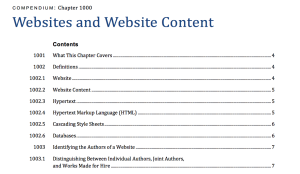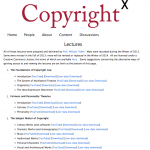By way of introduction, you might wonder: what is the Uniform Electronic Legal Material Act (UELMA)?
UELMA was approved in July 2011 by the National Conference of Commissioners on Uniform State Laws (now the Uniform Law Commission). UELMA addresses the challenges states face in providing permanent public access to trustworthy electronic legal material. UELMA gives states a lot of flexibility. It does not require them to make an online version of the law official. But if a state does designate an online version as official, then UELMA requires that the online version be:
- Authenticated, by providing a method to determine that it is unaltered;
- Preserved, either in electronic or print form; and
- Accessible, for use by the public on a permanent basis.
The types of legal materials that might be included in an UELMA enactment are state constitutions, state session laws, codified laws, and agency regulations which have the effect of law. UELMA also establishes a presumption that a state’s authenticated laws are accurate copies, and that presumption applies in every state that has enacted UELMA. So adopting UELMA will harmonize standards for acceptance of electronic legal material across state boundaries.
If a state designates an online version of its primary legal materials as official, UELMA’s preservation component requires provisions for backup and recovery, and procedures to ensure the integrity and continued usability of the material.
When UELMA was first enacted, the Government Relations Office (GRO) of the American Association of Law Libraries (AALL) reached out to AALL members and chapters, looking for people to get involved with promoting the passage of UELMA.
I had moved to Colorado in July, 2011. In November, the GRO got in touch with me and asked if I would be the lead advocate in Colorado for UELMA. I was really excited about UELMA and I said yes. The GRO sent me position statements and FAQs and a contact in the Colorado Senate. It was about then that I began to wonder what I had done.
I was entirely new to the state, had no personal relations with any state legislators, stakeholders, librarians, Library groups, or anyone else. But I read my materials and went off to meet the senator with all my materials to ask for someone to sponsor the uniform law.
So what did I actually wind up doing, besides meeting with the senator? I personally emailed every senator on the senate judiciary committee and every representative on the house judiciary committee, explaining what UELMA was, sending links, and offering to help. The senator who introduced the bill asked for some further help with issues about disability access under UELMA, and I sent her my comments.
No one else took me up on my offer until a day in March 2012 when I got an email, apologizing for the lateness and asking if I could testify before the Senate Judiciary committee on UELMA the next day . Sadly I was on a business trip in California, so I called the trusty GRO and asked for help. Together we put together a letter, which I emailed in. It was a helpful letter, according to the sponsor. It was read into the record. The bill passed the senate committee unanimously and was sent to finance.
I sent legislators lots of information about the many ways that documents can be authenticated because the Code of Colorado Regulations online is the official version and if UELMA was passed in Colorado, it was going to cost money to authenticate it. The bill sailed through the finance committee and headed to the house. Without any help from me, it passed through both committees in the house and went to the governor.
After UELMA was law, I got in touch with the agency that had been given the job of implementing UELMA and sent them all of the information the GRO had gathered on authentication and put them in contact with Michele Timmons, the Minnesota Revisor of Statutes, who was working on an in-house authentication system.
The key takeaways for me from this process were: you don’t need to know your legislators or have a network in place in order to effect change and work within a new system; there don’t need to be large groups of people involved; the GRO was an amazing resource; and it wasn’t really that much work!
Other states have had a much different road to enactment. For example, in California, an experienced group of law librarian advocates worked closely with Uniform Law Commissioner and Legislative Counsel of California Diane Boyer-Vine to ensure enactment. Each story is different and some of these stories are collected at Local Advocacy Networks: Adopting UELMA in Your State and How You Can Help, by Catherine M. Dunn, Head of Reference Services at the University of Connecticut School of Law Library. There are wonderful resources at the GRO’s UELMA Resources page. AALL has also posted case studies about the Colorado and California experiences written by me and Michele Finerty, Assistant Director for Technical Services at the Pacific McGeorge School of Law.
Which states have enacted UELMA so far? In order of enactment: Colorado, California, Minnesota, North Dakota, Hawai’i, Oregon, Connecticut and Nevada.
Bills to enact UELMA are pending in the District of Columbia and Pennsylvania. For more details on dates of passage, and the status of pending bills, go to the American Association of Law Libraries’ Government Relations Office website, the Uniform Electronic Legal Material Act Bill Chart, at http://www.aallnet.org/Documents/Government-Relations/UELMA/uelmabilltrack2013.pdf.
If your state has not already passed UELMA, think about getting involved as an advocate. You can contact AALL’s Government Relations Office or your local law library chapter. A few people can really make a difference!












